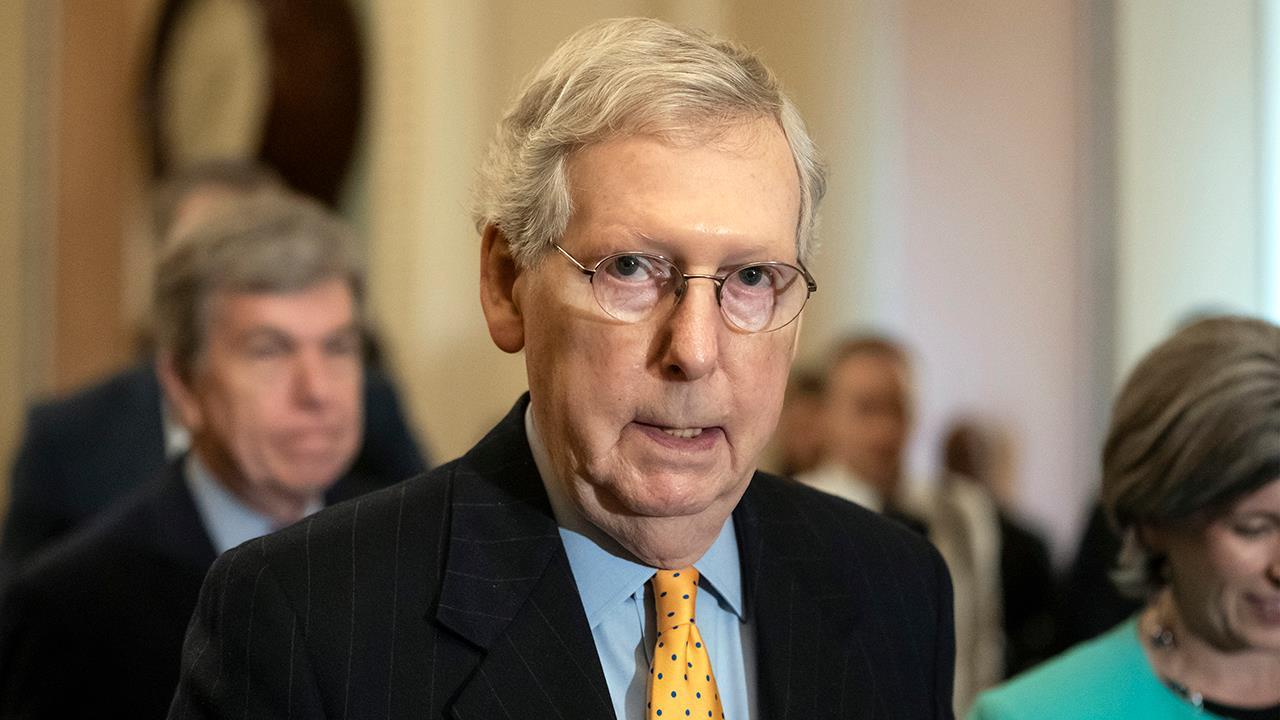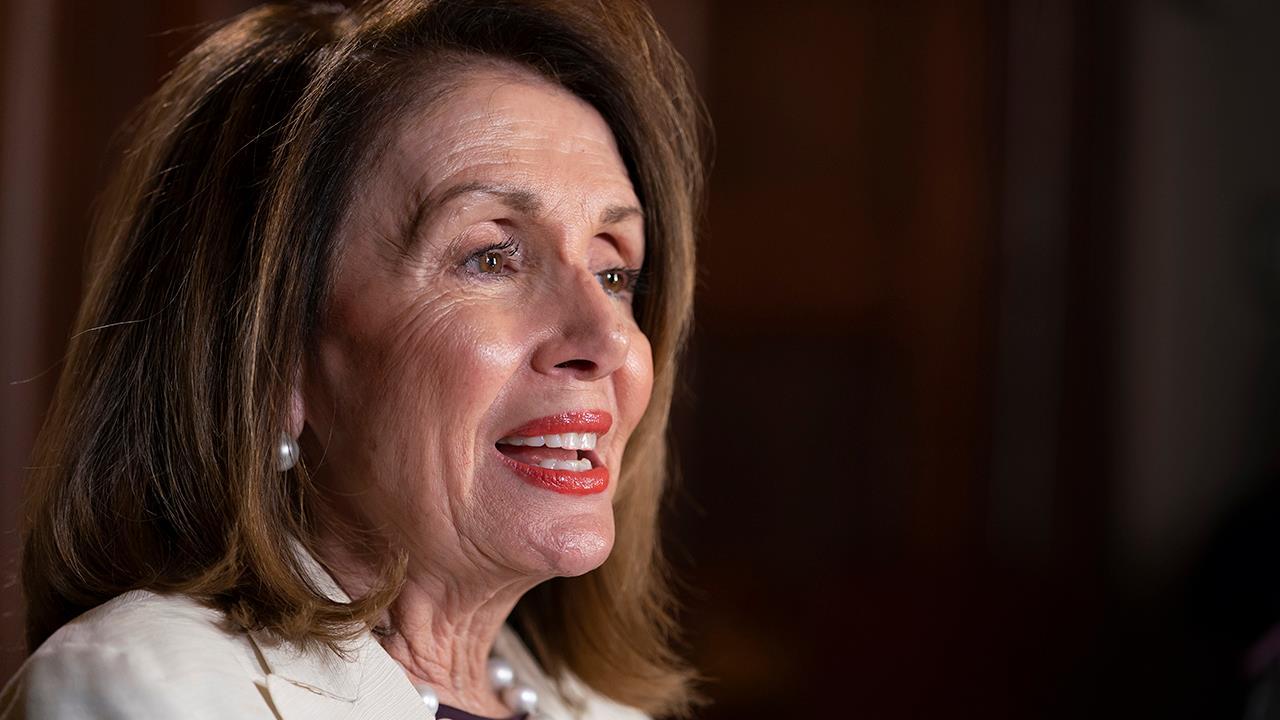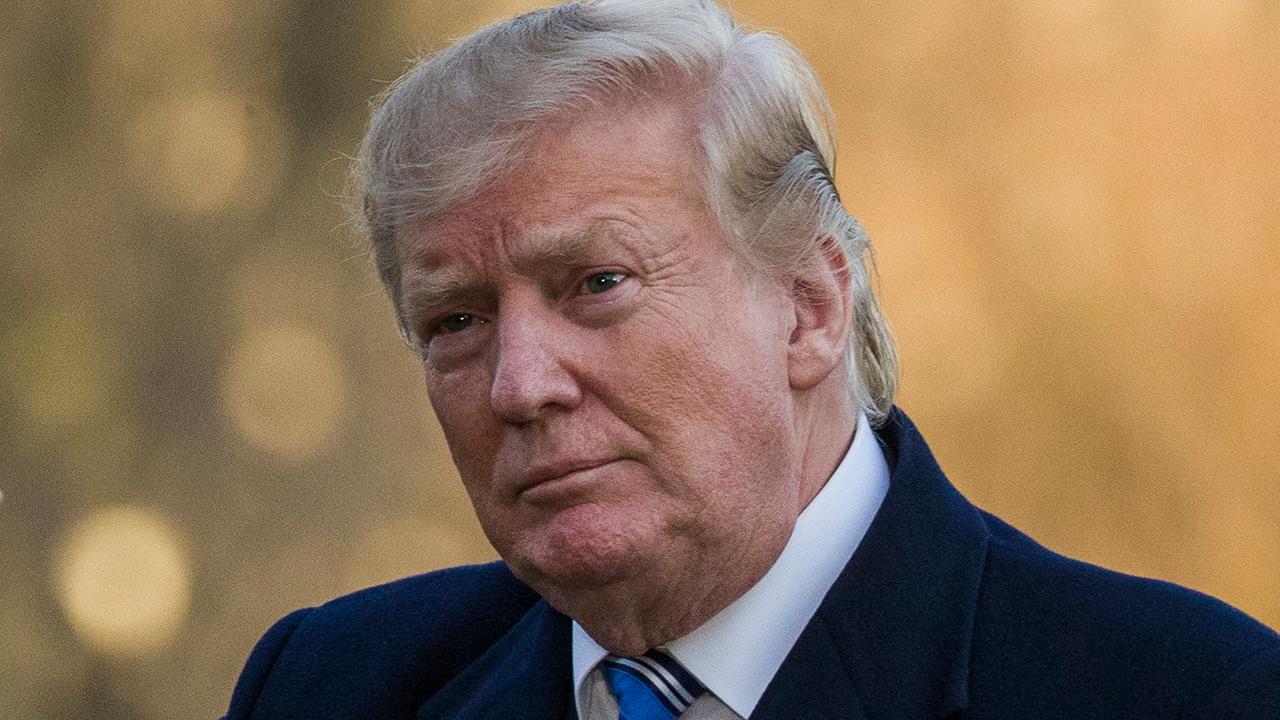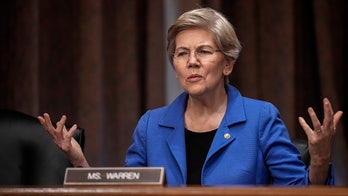Fox News Flash top headlines for April 24
Fox News Flash top headlines for April 24 are here. Check out what's clicking on Foxnews.com
It's never too early to try to avoid the next government shutdown. Or the next debt ceiling crisis. Especially when:
- The federal government recently faced three shutdowns in a little more than 15 months (albeit one for just a few hours).
- President Trump threatened to veto spending measures twice after everyone thought they had a deal.
- Senate Majority Leader Mitch McConnell, R-Ky., advanced a measure through the Senate to fund the government around Christmas before Trump and House Republicans torched it.
- The battle over immigration policy and construction of a border wall remains an epic cloud menacing the American political landscape with 19 months to go before the next presidential election.
So it should surprise no one that McConnell announced earlier this month that he had discussed the possibility of a broad bipartisan, bicameral, two-year, spending arrangement with Trump and House Speaker Nancy Pelosi, D-Calif.
"I'm hoping this will be the beginning of a bipartisan agreement, which will be necessary in order to have an orderly appropriations process, not only this year but next year as well," McConnell said at the time.
ACTING DHS CHIEF PREDICTS PROGRESS BUILDING SOUTHERN BORDER WALL DESPITE CONGRESSIONAL INACTION
McConnell knows the debate over the border lingers, with Trump and many congressional Republicans pushing for additional wall funding. He's not just worried about the prospect of another shutdown Oct. 1, the start of the new fiscal year and when the current round of funding expires, but a second shutdown on Oct. 1, 2020, right before the presidential election.
The chances of another shutdown are high, considering that Trump went around Congress to declare a national emergency in order to marshal money for the border wall. The courts will determine whether that maneuver was constitutional, but the president's action alone bolstered the chances of another shutdown. The possibility increased even further after Congress failed to override Trump's veto of a measure to terminate the national emergency.
McConnell felt burned by the president after he forged ahead with a government spending plan in December, only to have Trump tell then-House Speaker Paul Ryan, R-Wis., he wouldn't sign the package. So after congressional leaders forged a mid-February deal to run the government through this fall, McConnell sped to the floor to publicly announce Trump's intention to sign the measure. McConnell's move locked in the president, lest he try to renege. McConnell understands Trump's fickle and volatile approach to governing. The president dumped McConnell and Ryan under the bus during a 2017 Oval Office meeting in favor of a spending gambit pushed by Pelosi and Senate Minority Leader Chuck Schumer, D-N.Y. Wiser for that experience, McConnell knows the best bet is to secure broad, long-term buy-in from the White House and Congress on a topline spending measure to avoid potential shutdowns – pre-empting Trump's incessant oscillations.
Let’s examine exactly what's at stake. You may hear these negotiations referred to rhetorically as a "caps deal." This refers to an effort to establish total spending caps for discretionary spending (read: anything but entitlements) for fiscal years 2020 and 2021. The "caps" refer to a set of mandatory spending restrictions (known as sequestration) which Congress imposed as part of the debt ceiling agreement in 2011. The goal is to make everyone happy as long as they can reach a topline accord for all spending by eliminating the caps. The advantage for Trump and many Republicans? Military spending and some additional money for a border wall. The advantage for Democrats? More spending on everything else.
Debts and deficits? Forget about it.
HOUSE DEMOCRATS POSTPONE BUDGET MEASURE VOTE AMID PROGRESSIVE RESISTANCE
Sure, some fiscally-conservative Blue Dog Democrats may balk, as will fiscal conservatives like Sens. Rand Paul, R-Ky., and Mike Lee, R-Utah. But the key here is the right mixture of Democrats and Republicans. In divided government, leaders need to secure buy-in from both parties and both ends of Pennsylvania Avenue. But remember, these are discussions focused on overall spending numbers, not specific appropriations. A dispute over the latter is what led to the monstrous government shutdown in December and January.
House Democrats drew criticism two weeks ago when they yanked their budget blueprint off the floor because they lacked the votes to adopt it as divergent voices split the caucus. House Majority Leader Steny Hoyer, D-Md., told Fox that if the budget (which only sets broad spending guidelines and is not binding) "had been critical ... I think Nancy (Pelosi) and I could have gotten it passed."
Hoyer pointed out that the discussions with the administration and McConnell are more "substantive." That's true. The budget House Democrats aimed to approve was simply a wish list, much like President Trump's budget in the winter. So, if the sides can get an agreement on spending caps, that would, in theory, make it easier to focus on the hard part, which is appropriations.
Here's the issue with the sequestration caps: Sequestration always hits the military hardest because Congress spends the most on the Pentagon. Sequestration restricts the Pentagon to $576 billion for fiscal year 2020 and could impose a cut of $71 billion to defense next year and $55 billion for non-defense programs.
TRUMP, GOP PLAN TO RESCIND BUDGET SPENDING HAS PRECEDENT BUT FACES ROCKY PATH IN CONGRESS
Trump and defense hawks want to spend more on the military. So, if they get a "caps deal," and cancel sequestration, they can spend a lot more. Of course, the deal must be made with congressional Democrats who also want to eliminate sequestration caps on non-defense spending.
Even though the House failed to adopt a budget this week, Democrats did set an overall discretionary spending figure (encompassing all 12 appropriations bills) of $1.295 trillion for fiscal year 2020. This excludes non-discretionary spending which includes entitlement spending.
But here are the politics: Both sides believe if they can get the president on board with the defense hikes, he could sign off on other Democratic priorities. And if both houses of Congress are behind the plan, Trump could agree and avoid the shutdowns.
The gambit would establish new spending caps for the remainder of the president's term, drastically reducing the chances of shutdowns while baking in a debt limit increase. They could also forge a deal on a supplemental spending bill to cover a host of natural disasters, from Puerto Rico to flooding in the Midwest. One GOP plan to address natural disasters is stalled in the Senate.
CLICK HERE TO GET THE FOX NEWS APP
"If we can come to the agreement with the Senate, that puts the onus on the White House," said House Budget Committee Chairman John Yarmuth, D-Ky. "There will be no way [Trump] can explain it away. If he wants that [responsibility of a shutdown], it's on his shoulders."
Pelosi and Schumer are slated to visit the White House Tuesday to discuss a possible infrastructure plan with Trump. The last time Pelosi and Schumer huddled with the president in the Oval Office, sparks flew as the leaders verbally sparred with one another on live TV. The conclave produced one of the most memorable episodes of the Trump presidency. This tableau could prompt similar combat, even though the subject matter is infrastructure. The border wall dispute and immigration policy will remain a flashpoint as long as this president is in office and won't be settled by any caps agreement.
That's why many want to get started on a spending arrangement now. They know the next round of arguments over the wall could be more intense than the last.








